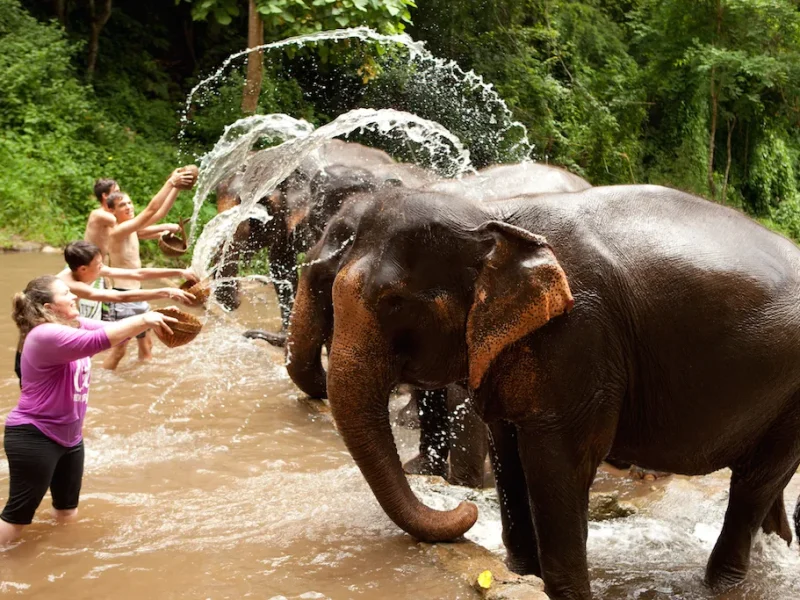Thai silk has developed into one of the most well-liked souvenirs for tourists to bring home from Thailand and is an essential component of the country’s economy. This is largely attributable to Jim Thompson, who popularised the use of silk as a natural fabric all over the world, and to Sirikit, the Queen Mother of Thailand and Queen Consort to the late King Bhumibol Adulyadej, who was largely responsible for the growth of the industry. Both of these figures played a significant role.
Jim Thompson, an American who worked in Bangkok in the 1940s and whose name is now synonymous with high-quality Thai silk, was stationed there at the time. After World War II, he had no intention of going back to his home country, so he invested his money in silk during the 1950s and 1960s.
In contrast to its unexplained demise in 1967, when several of its members went missing while trekking in Malaysia, Thai silk enjoyed a prosperous period in the middle of its existence. According to Time magazine, Jim Thompson “nearly single-handedly saved the Thai silk industry from extinction” because of his innovative and enterprising attitude.
The local peasants who understood how to weave only made items for home use during their leisure time and during agricultural seasons when they were not needed. This practice lasted for decades. Even in modern times, there are still farmers all throughout the United States who consider weaving—and not only silk weaving—to be a viable secondary source of income.
As soon as Jim Thompson’s name gained notoriety around the globe, the local Thai silk industry began shipping its products all over the world. However, the regional weavers continued to maintain only a few manufacturing lines in their factories.
Some of the local villagers eventually formed small silk production businesses in their own villages thanks to the support of government agencies and the growing number of opportunities available on the market. This was accomplished by initially banding together and looking for synergies to increase their manufacturing capacity.
Queen Sirikit, who reigned Thailand at the time of the late King Rama IX, was known for wearing Thai silk robes to all of the royal rituals and ceremonial events that took place throughout his reign. The Queen Sirikit Textile Museum in Bangkok is where you may learn about the extraordinary contributions that Her Majesty has made to the Thai silk industry.
The Queen Sirikit Foundation for the Promotion of Supplementary Occupations and Related Skills (SUPPORT Foundation), which manages the Bang Sai Royal Folk Arts and Crafts Centre, also offers necessary training to local people during their breaks from their farming routines. These training sessions take place at the Bang Sai Royal Folk Arts and Crafts Centre.
The provinces of Surin, Khon Kaen, and Nakhon Ratchasima in Thailand’s northeastern region were the ones that got the ball rolling on the growth of sericulture thanks to this directive. This latter location is one of the most important sites for the manufacturing of silk in Thailand. For those interested in learning more about the many steps involved in the production of textiles, a trip to the northeastern area is an excellent chance.
The Queen Sirikit Institute of Sericulture was established in 2005, which helped to ensure that a large number of small-scale silk producers and weavers across the country received the necessary support to increase and improve their production. This was accomplished by ensuring that they received adequate funding.
In addition to supplying weavers and manufacturers of silk with the information essential for production and marketing, the institution worked toward the goal of establishing particular quality standards for weaving and silk manufacturing.
They came up with a grading system and dubbed it the Royal Peacock Mark. It had four categories that were determined by the naturalness of the fabric and the kind of fibres it included. These are Thai royal silk, which carries the brand of the golden peacock; Thai classic silk, which carries the brand of the silver peacock; Thai silk, which carries the brand of the blue peacock; and Thai silk mix, which carries the brand of the green peacock. When it comes to shopping, this categorization is really helpful.
- My Caffeinated Journey: The Top 8 Best Coffee Shops in Bangkok - September 11, 2023
- My Encounter with Thailand’s Black and White Striped Snakes - September 2, 2023
- The Koh Samui Island Tour - July 24, 2023


